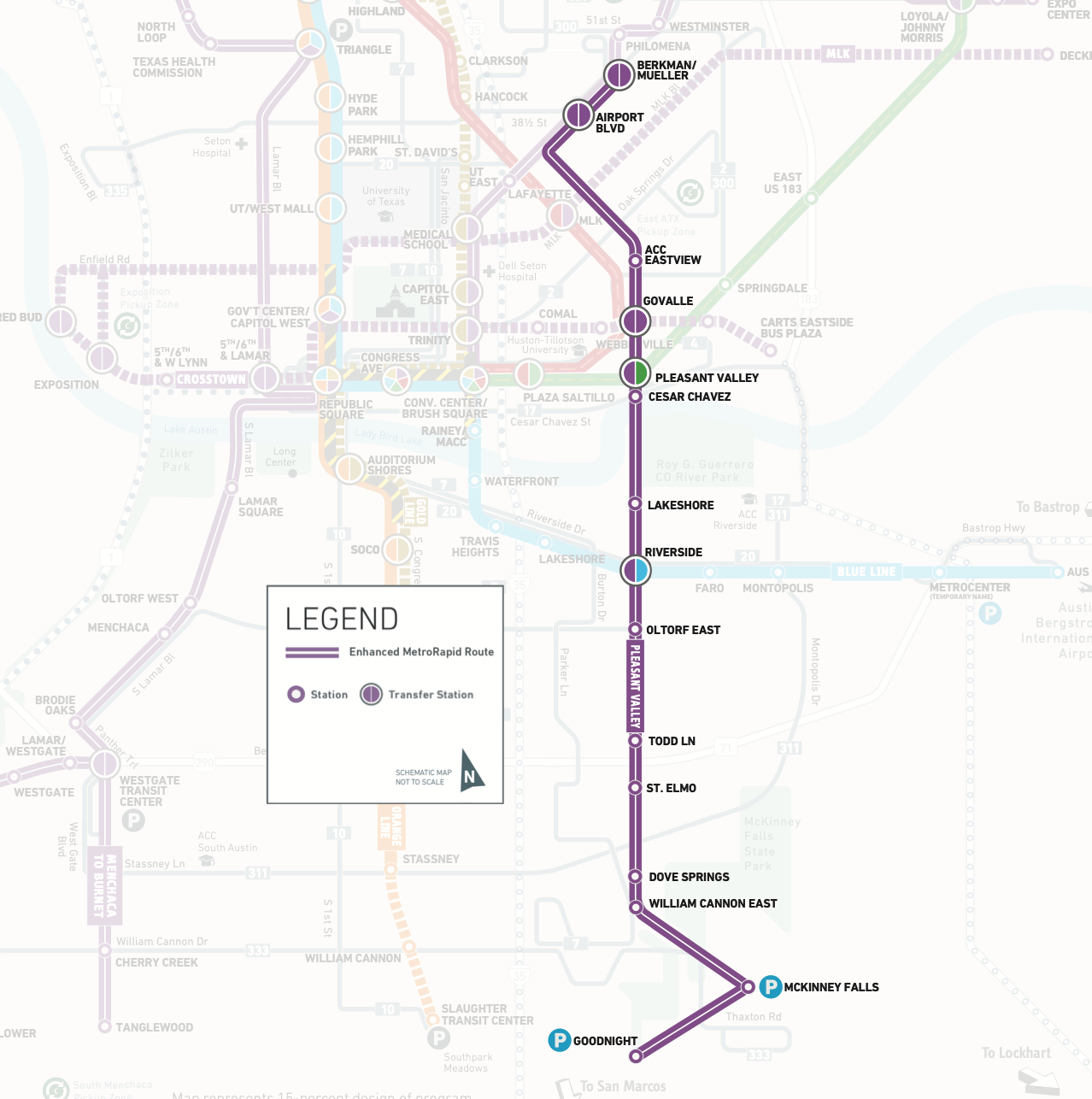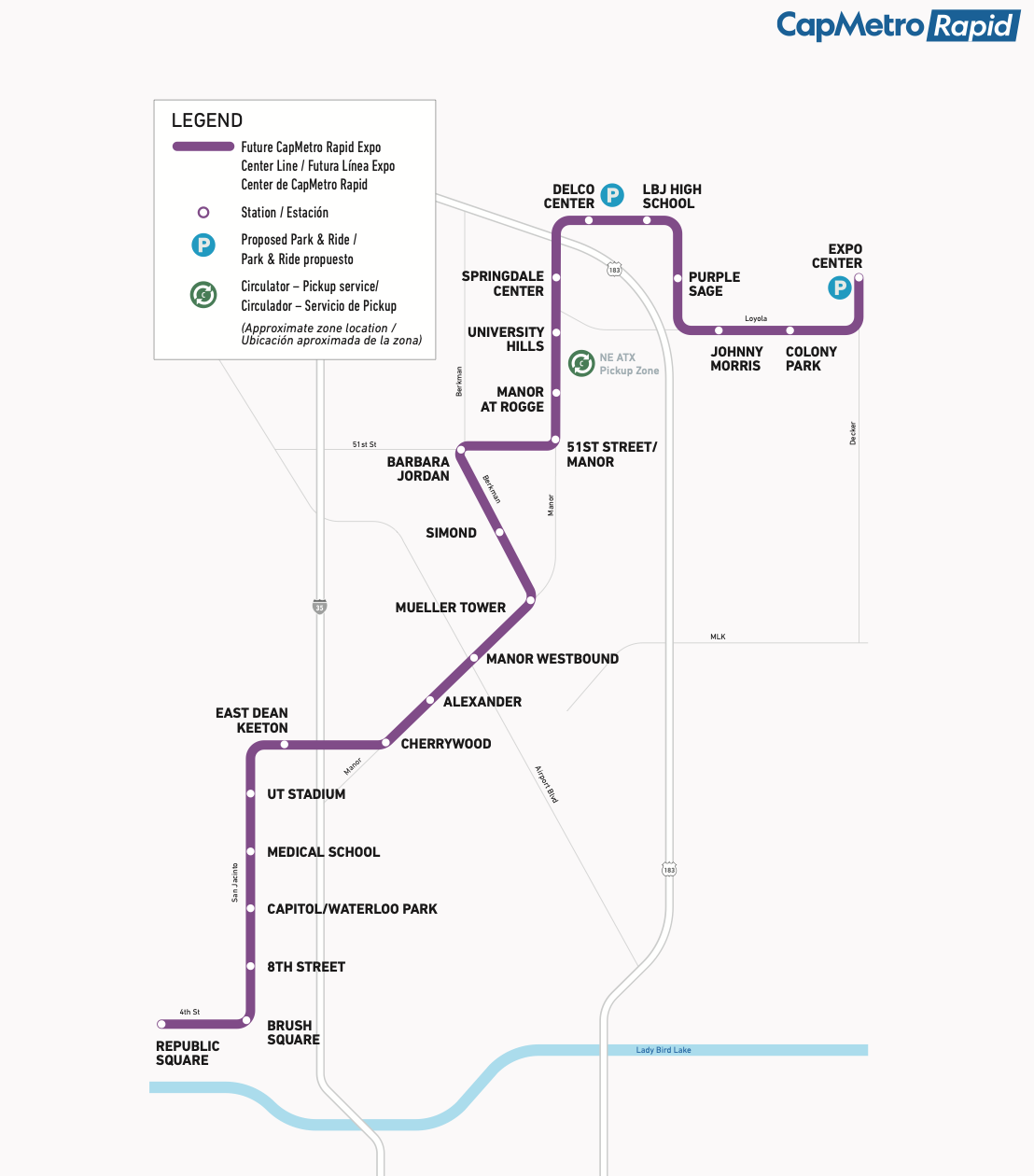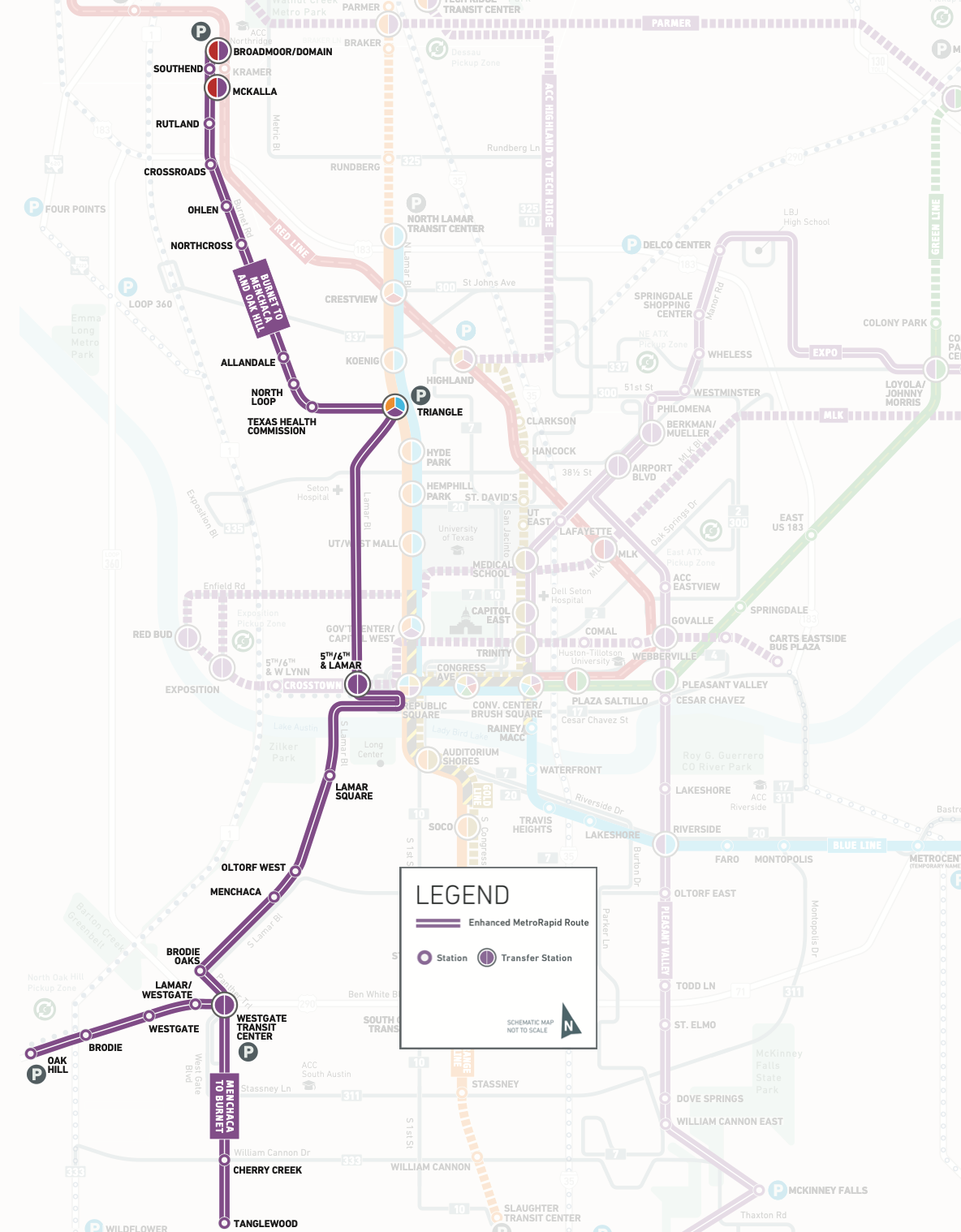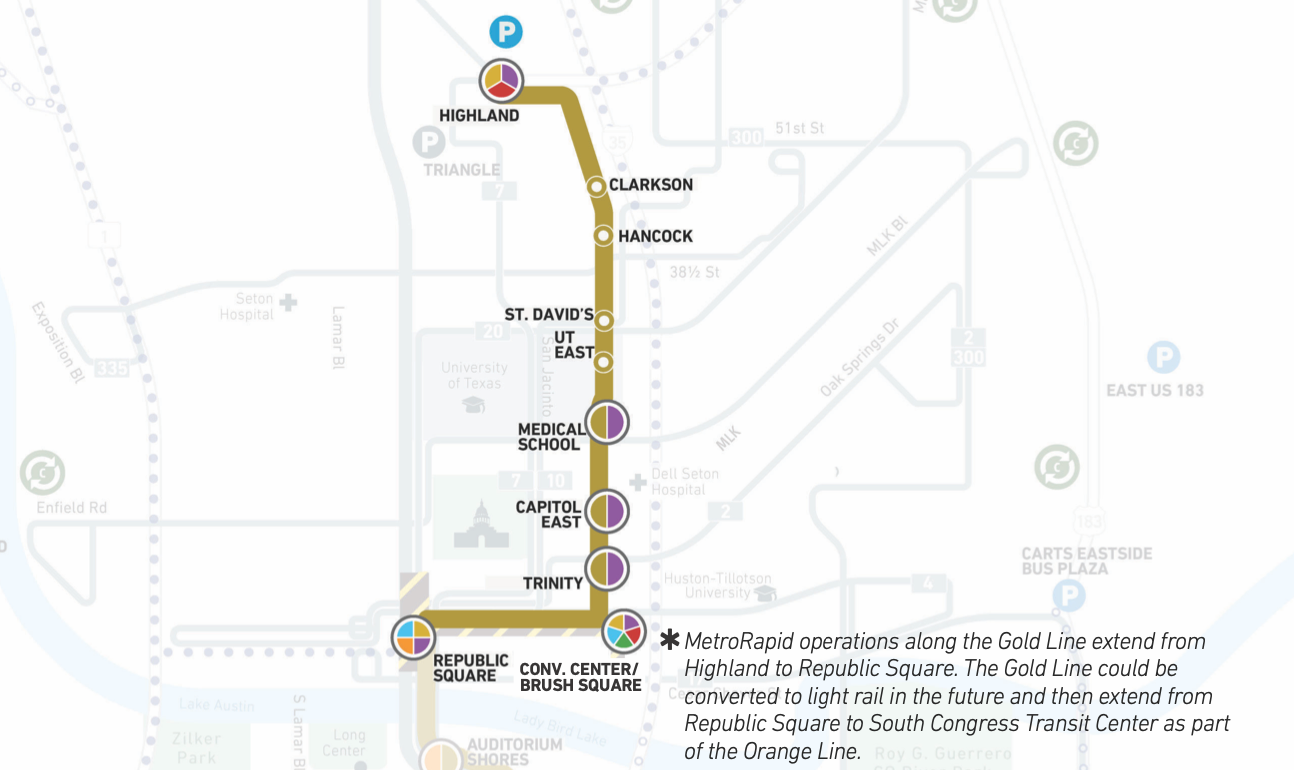Cap Metro's not-so-rapid launch
20-30 mins ain't rapid.

An ATX party in Chicago

From left: Council members Vanessa Fuentes, Zo Qadri and Alison Alter at the DNC in Chicago.
The mayor was in the house too:
Thank you President Biden for your decades of public service. You’ve given it your everything and the country is in a better place because of that— and you said it very well tonight:
— Mayor Kirk Watson (@KirkPWatson) August 20, 2024
“Democracy has prevailed. Democracy has delivered. And now, democracy must be preserved.”
I’m… pic.twitter.com/9IZ57L2rbS
Watson also touted the hundreds of millions of dollars the Biden administration has delivered to Austin via the Inflation Reduction Act, the 2021 infrastructure law and the American Rescue Act and described the Biden/Harris as important allies in housing affordability.
Unfortunately, the DNC is also the reason that a KXAN segment on City Council elections that included tens –– perhaps dozens! –– of seconds of face time for yours truly did not air on the 10 o'clock news last night. It still made the internet, though.
That ain't rapid
Well, this sucks. Cap Metro recently announced that two of the four new MetroRapid bus routes that it is launching as part of Project Connect will not actually be rapid. At least not at first.
Wait, what does rapid mean? Well, at the very least it means that buses should come frequently. Our two existing MetroRapid routes –– the 801, which runs along N. Lamar, Guad, SoCo & the 803, which runs along S. Lamar & Burnet –– come every 10 minutes during peak hours (7 am - 6 pm) and only go up to 20 minute headways after 8 pm. And then Cap Metro has a number of normal bus routes that are deemed "frequent" –– they come every 15 minutes during peak hours.
However, the Pleasant Valley and Expo Center MetroRapid routes (shown below) that are launching this spring will begin at headways of 20-30 minutes. Not as frequent as our other MetroRapids –– not even as frequent as our regular old "frequent" routes that aren't supported by a dedicated voter-approved tax and a $65M federal grant.
The two routes were supposed to launch last year but were delayed due to supply chain restraints linked to electric buses and charging infrastructure (more below).
In an interview yesterday, Cap Metro CEO Dottie Watkins told me the agency is committed to getting the routes up to 10-minute headways eventually. In fact, it is obligated to provide high-frequency service with electric buses as a condition of the federal grants, she said.
The problem, alas, is the electric buses. Or more specifically, the bus chargers. Until the charging infrastructure is set up at the new Park & Ride facilities planned at the terminuses of these routes, the electric buses will not be able to run all day. Getting the chargers in place has taken more time than anticipated because of supply chain issues over the last few years and stringent "Buy America" requirements linked to the federal grants, said a Cap Metro spokesperson.
Initially the new MetroRapid routes will be "primarily" running regular old diesel buses, said Watkins. The new electric buses will be spread out among all of the agency's routes, presumably because no one route should be dependent on vehicles that can only operate 8-10 hours at a time.
So the bottom line is we don't have enough buses to establish two new high-frequency routes. Watkins said the plan is for the new routes to move up to 10-minute headways within 18 months of launching. So perhaps in the summer/fall of 2026.
There are certainly some who believe Cap Metro should have delayed implementation of the new rapid routes until the service matched its branding. Watkins said that "waiting for perfection" would be a disservice to the public.
She understands the value of brand-building, she said, "But I don’t know that it’s more important than trying to give people a ride. Waiting for perfection for the sake of protecting the brand feels off."
The two existing MetroRapid routes, which were launched a decade ago courtesy of a federal grant, similarly got off to a rough start, although in that case the culprit was too much emphasis on branding at the expense of the basics. Consultants advising the agency stressed the importance of distinguishing the new bus routes from regular ones in an effort to attract "choice" riders (read: richer). The MetroRapid routes got distinct and much more expensive bus shelters that ironically didn't provide much shelter, they got a new "premium" fare that was 50¢ higher than the standard bus fare, and there were often very long distances between stops.
The branding-first approach with MetroRapid was an unmitigated disaster. Ridership on the corridors served by the 801 & 803 fell significantly from what it had been when they were just served by the regular old 3 & 1 routes, whose frequency had been pared back based on the assumption that many of the riders would simply opt for the new routes. The problem was, there weren't enough people living within walking distance of the new routes' relatively few stops. The premium fare was not just 50¢ more, but prevented people from transferring with a normal $2.50 day pass. It was a terrible example of top-down transit planning that is oblivious to the experience of actual transit riders.
So it makes sense that Watkins, who's been in the trenches at Cap Metro since her days as a bus operator in college, would opt for rolling the damn buses over #branding. But it's still a huge bummer. I just hope that when the 10-minute frequency becomes available, Cap Metro thinks critically about how to spread the word. Mueller in particular is presumably full of people who are potential "choice" riders: people who are seeking alternatives to driving but won't do so unless the alternative is really good.
Wait, buses are part of Project Connect?
Yes, although the new light rail system is certainly the centerpiece of Project Connect and accounts for the great majority of the spending, there are a bunch of other things, including four new MetroRapid bus routes.
The first two are supposed to come on line this spring (no precise date), while the last two are still TBD...
These routes are sometimes referred to as "Bus Rapid Transit," but they are far from true BRT because they will not operate entirely (or even mostly) in dedicated right of way.
Pleasant Valley
The Pleasant Valley route will begin at Mueller, travel east along Airport Blvd, and then south on Pleasant Valley Rd all the way down to William Cannon. It will then jut east to connect to a new Park & Ride at McKinney Falls and then terminate at Goodnight Ranch.

Expo Center
This route is far more complicated to explain, but suffice it connects far east Austin to downtown, also running through Mueller and the UT campus.

The 803 extensions
The current 803 route runs along Burnet, Guad and then S. Lamar, terminating at the Westgate Transit Center at Ben White/Menchaca. Cap Metro envisions offering two extensions –– one that runs west out to Oak Hill and another than runs south along Menchaca down near Slaughter Ln.

The Gold Line
Once upon a time, the Gold Line was envisioned as rail. However, the plan that was presented to voters in 2020 had downgraded it to bus. Cap Metro maintains that it could become rail in the future. But unless there is some kind of paradigm shift (locally, nationally), that's going to be a long, long time from now.
Here's what a Cap Metro spokesperson told me about the route four years ago:
"The alignment through UT requires additional coordination during preliminary engineering. Conceptually it would operate on Trinity, San Jacinto, Dean Keaton, Red River, 45th Street, parallel to the Red Line on Airport to ACC Highland."

If somebody forwarded you this email, please consider subscribing to the newsletter by visiting the website.





